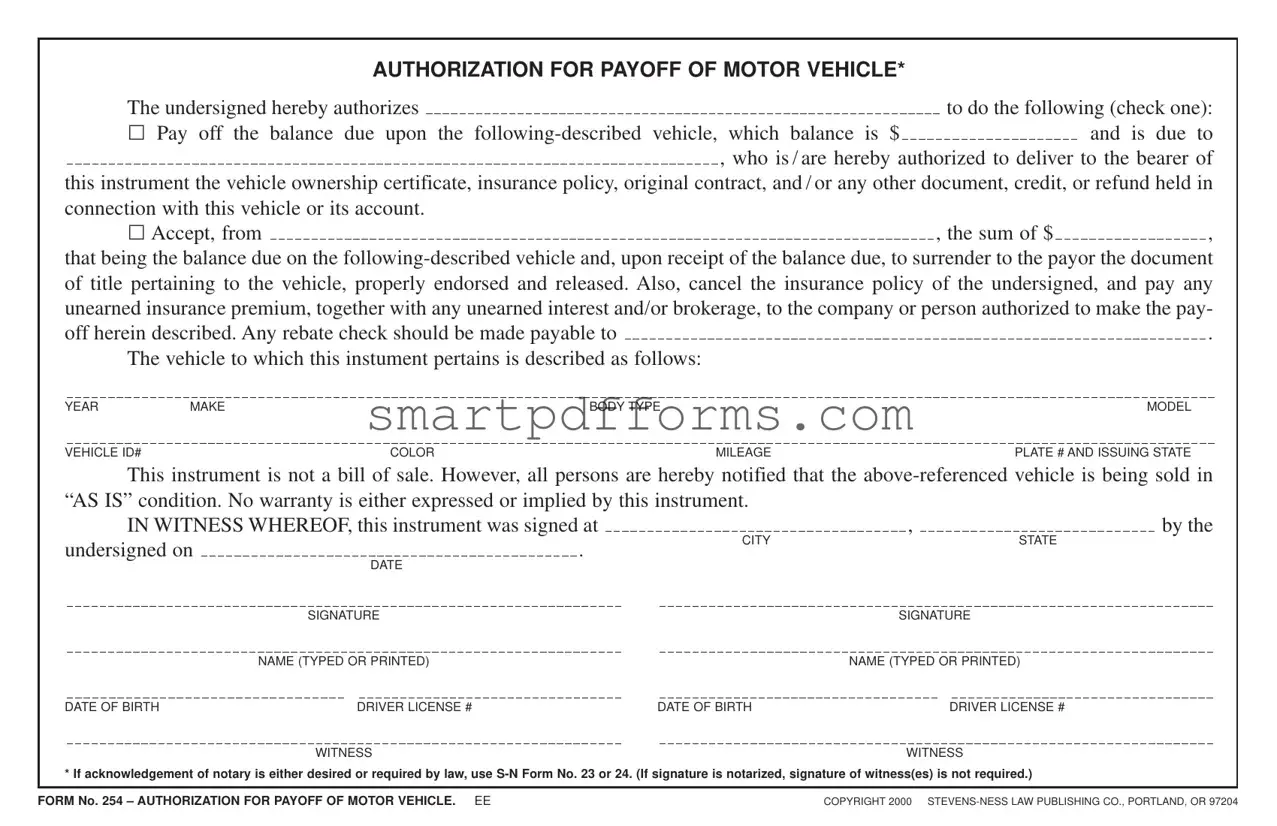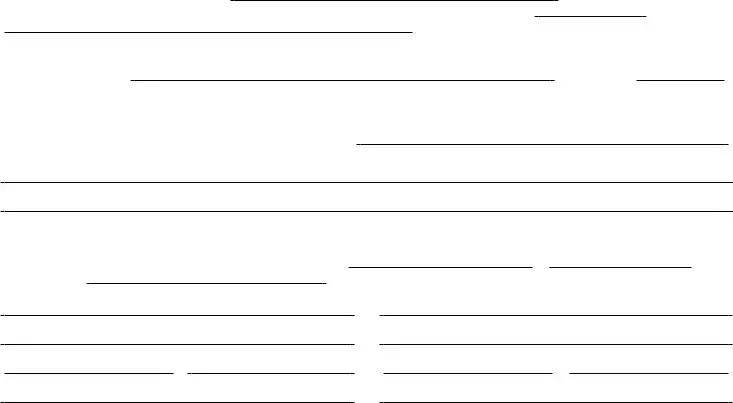Understanding the Vehicle Payoff Authorization Form is crucial for anyone looking to finalize the sale or transfer of a vehicle where there is an outstanding balance owed. This document serves a dual purpose. Firstly, it authorizes the payoff of the balance due on the vehicle to the lienholder or financing company, thereby enabling the transfer of ownership to the buyer or new owner. Secondly, it outlines the specifics of the transaction, including the amount due, the vehicle's description (year, make, model, VIN, color, mileage, plate number, and issuing state), and the direction for handling any unearned insurance premiums, interest, or brokerage fees. It also makes provisions for the delivery of crucial documents such as the vehicle ownership certificate, insurance policy, and original contract upon the payoff. Furthermore, it addresses the cancellation of the existing insurance policy along with the payment of any unearned premiums. Significantly, it emphasizes that the vehicle is sold "AS IS," making it clear that no warranty is implied or expressed with the sale. This form necessitates the signatures of all parties involved, and in cases where legal acknowledgment is required or desired, notarization can replace the need for witnesses. The Vehicle Payoff Authorization Form thus plays an essential role in ensuring a smooth transition of vehicle ownership while protecting the interests of both the seller and buyer.

